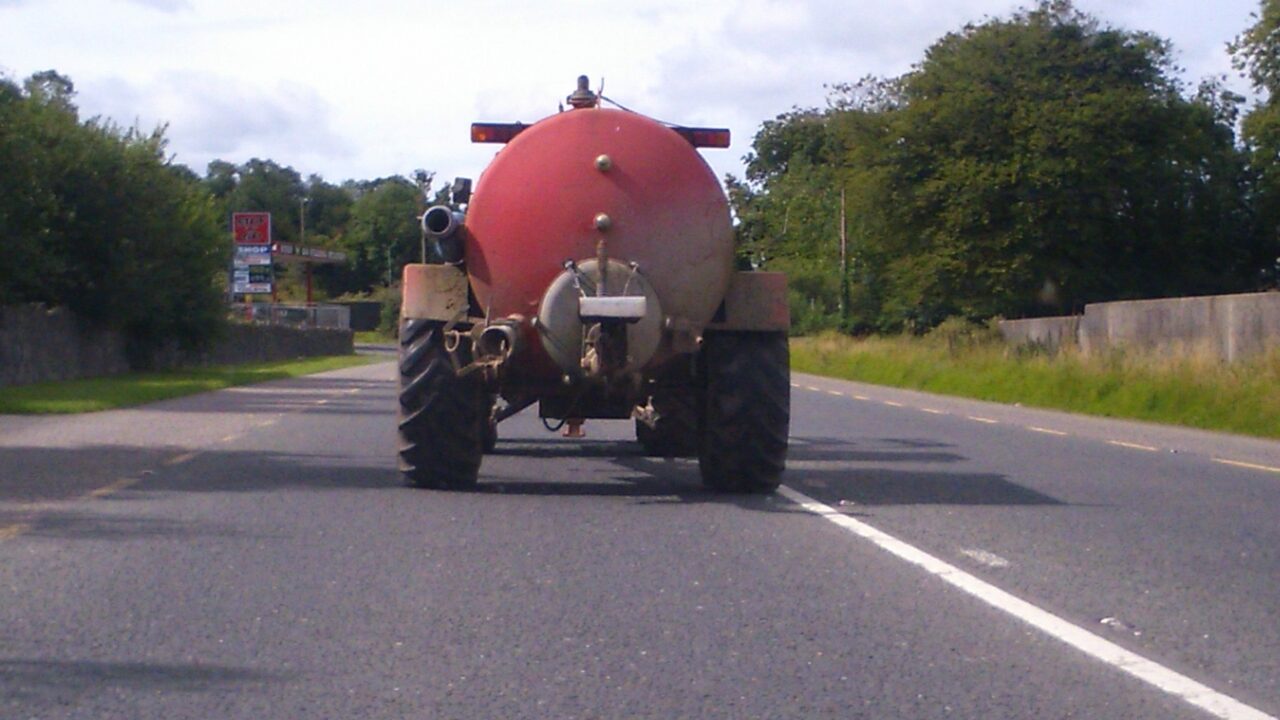Being stuck behind a tractor really won’t cost you that much time, motorists are being told as the number of tractors and farm machinery is going to increase on the roads over the coming weeks.
Noel Gibbons, Road Safety Officer with Mayo County Council, said motorists need to “give farmers a break” and not succumb to road rage as the level of agricultural machinery on the roads increases at this time of the year.
He said cars taking unnecessary risks to overtake on rural roads are a danger to themselves and other road traffic.
“Car drivers who are used to keeping up a steady 50 or 60mph on country roads at other times of the year find their heart rates soaring and steam coming out of their ears as they stare at the rear end of a tractor.”
He is reminding motorists that road safety is especially important as farmers and motorists share the road during this season.
Motorists should understand that farm machinery has a legal right to use public roads, as does any other motor vehicle, Gibbons said.
“Farm equipment is so big and slow, how could you possibly hit a farm vehicle?”
Consider this: A car travelling 55mph can close a 300-foot gap (the length of a football field) and overtake a tractor moving at 15mph in about four seconds.
“If you do not begin to slow as soon as you see a farm vehicle, you might not have time to avoid a collision.
Gibbons has said that the Road Safety Office of Mayo County Council offers some safety tips for motorists who find themselves sharing the road with farm equipment.
Farmers – who drive their equipment on the roads – will often try to get out of the way when they can, but Gibbons has said that they need drivers to be patient and wait for equipment to find a place to pull over.
“It is issues like farm equipment turning right as a car was trying to pass or a car underestimating the width of something that we need to educate both road users on.
“We’d like to prevent these kinds of issues if we can.”
He has issued the following tips for road users as this busy time of year approaches:
- Begin to reduce your speed immediately after seeing a slow moving vehicle emblem. Remember at 55mph, a driver has about four seconds before colliding with a tractor a football field away.
- Farm machinery operators may not be able to see you because the large equipment or load can block part of their rear view mirror. If you can’t see the driver, the driver can’t see you.
- Be extra cautious on wet roads or when mud. On wet roads, stopping distance can be increased as much as five times.
- Yield to wide approaching vehicles. Farm equipment is often wider than a normal traffic lane.
- It is illegal and very dangerous to pass farm equipment in a no passing area.The relatively slow speed of farm equipment does not make it safe to pass in situations that are not otherwise lawful.
- When passing be extra cautious. Tractors and other equipment maybe wider than they look from behind. Machinery that is half on the road and half on the shoulder may suddenly move completely on the road to avoid hitting obstacles such as mailboxes, road signs, and bridges.
- Be sure there is adequate distance for you to clear the equipment and pass safely.
- Check to be sure the machinery is not turning left. Because of the size of today’s equipment, farmers often have to make wide left turns. Don’t assume that when the equipment veers left, the operator is pulling over for you to pass. The operator is likely preparing to make a wide right turn. Likewise, sometimes to make a left turn, the driver must fade to the right.
- Be patient. Farm machinery can’t travel at high speeds. farmers are advised to move to the side of the road to let traffic pass when they are able to do so safely.
- The keys to sharing the road with farm equipment are caution and patience. Even if you have to slow down to 20mph and follow a tractor for two miles, it only takes six minutes of your time, which is equivalent to waiting for two stop lights.
- The next time you find yourself sharing the road with farm equipment, take a moment to appreciate the farmer’s life and be thankful for the food and fibre he provides. Making good driving decisions will help get you both safely to your destinations.
Gibbons warned that country roads are unpredictable and, therefore, present far more challenges to drivers.
“Country crashes often result in greater numbers of fatalities and injuries because vehicles are usually travelling at higher speeds.
“Up to 70% of all fatal road collisions occur on rural roads.”
The Road Safety Officer also asked farmers to be mindful of busy morning and afternoon commuters.
“While it often is impossible to avoid operating on the roads during these times, it may be possible to limit road transportation and, if there is a build-up of traffic behind farm vehicles, pull in and let traffic pass where it is safe to do so.”

